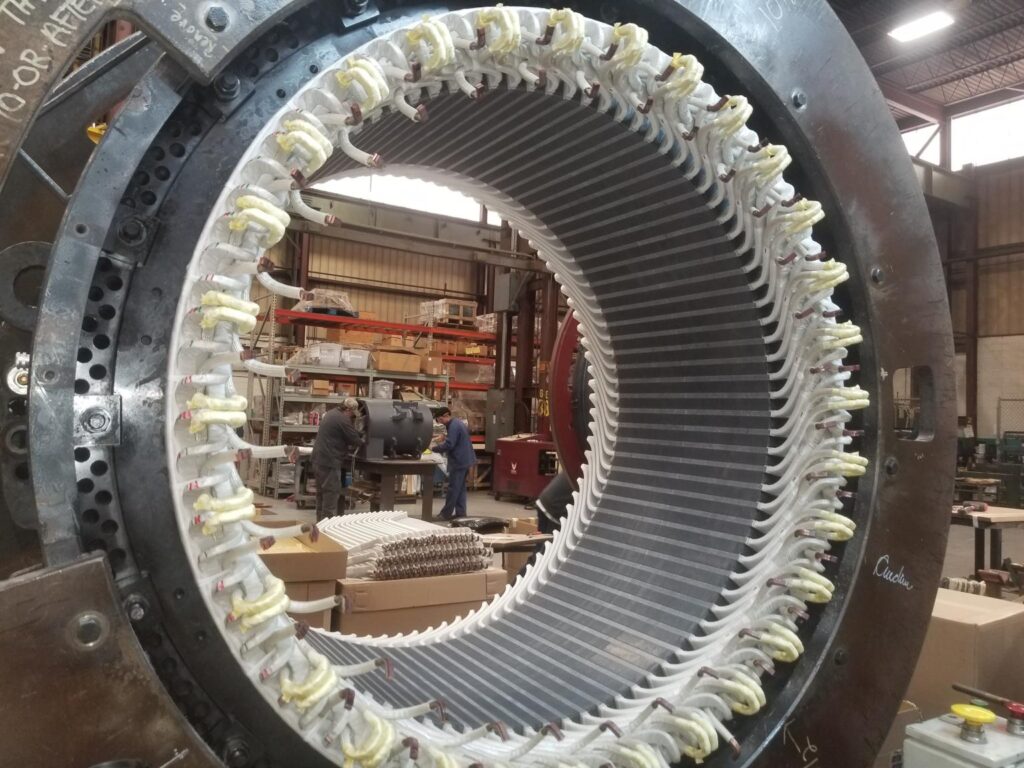Create the best possible operating environment
The perfect operating environment for bearings is contaminant-free, low-humidity, have moderate fluctuating temperature, and no vibration. In a perfect environment, bearings would be in constant use with no static storage or downtime. Loads would be perfectly balanced, never exceeding specifications, and bearings would be lubricated continuously to eliminate friction wear. Theoretically, bearings could last indefinitely under such conditions.
In reality, the best you can do is strive to create the perfect environment. Some of the biggest contributors to bearing failure are in areas frequently overlooked in maintenance. Knowing basic technical motor information helps to create the ideal environment for bearings.
Manage moisture to extend motor life
Although it is not always possible to control moisture, especially in humid environments, it can always be managed. When motors are up and running, humidity is rarely harmful, but when they are turned off and cool, condensation builds up inside, often collecting around a bearing’s rolling elements. You cannot stop condensation, but you can guard against its harmful effects. One way is to use grease fortified with rust inhibitors in bearing assemblies wherever you suspect condensation. Another way is to rotate the shafts if idle motors frequently to reestablish the protective lubricant film that should always be present between the rolling elements and the raceways.
Protect idle motors from vibration
A common misconception is that bearing wear occurs only when motors are running. In reality, some of the worst wear occurs when motors are idle yet subject to shock and vibration. A secondary motor may be mounted near a primary motor or on some other assembly that is subject to vibration. When the motor is not running, the bearings vibrate in place, creating depressions in the raceway called false brinelling. It may seem like too much technical motor information, but false brinelling is important.
False brinelling occurs when the rolling elements break through the thin lubricating film separating them from raceway. The inevitable metal-to-metal contact wears depressions in the raceways. When the motor is operated, the rolling elements roll over these depressions, generating noise and shortening the bearing’s working life. Whatever steps are necessary should be taken to protect static motors from shock and vibration, including motors and vibration and motors in transit. One of the best ways to protect a motor being transported is to firmly secure the rotor shaft before transit.
Align motor shafts carefully during installation
One of the greatest causes of premature bearing failure is misalignment, however minor, between the electric motor shaft and the shaft of the driven equipment. Such misalignment introduces excessive vibration and loads.
Although couplings used to join shafts are typically flexible and can accommodate misalignment, it is a mistake to take advantage of that flexibility. Any time shafts are misaligned, the working life of the electric motor is shortened. A coupling has only one desired operating position, the position it takes when at rest, like when it is on a work table free of connections. When a coupling operates in any other position, it creates unnecessary stress for the motor bearings.
Equipment and motor shafts must be properly aligned so the coupling will not bend or twist during operation. The same alignment principles hold for pulleys and belts that join shafts. Over-tightening belts also introduces unnecessary loads. Only enough tension to prevent belt slippage should be used. The best shaft alignment procedure is to secure the driven equipment first and then install the coupling to the equipment. Only after the coupling is attached to the equipment should the motor be moved into proper alignment and joined to the coupling. The final step is to secure the motor. This is important basic technical motor information.
Know the ins & outs of lubrication
Everyone understands the need for lubrication in bearings, but not everyone understands how easy it is to overdo it. Proper lubrication includes the right quantity, the right interval, the right type of lubricant, and the right application method.
(i) Quantity
A new electric motor arrives with its bearings properly lubricated for the dimensions of the bearing envelope, the cavity that encompasses the rolling elements. An excess of lubricant would be potentially harmful to the bearing. As soon as a bearing’s rolling elements begin to move, they must push through whatever grease is in the cavity. If there is too much grease, that pushing requires more energy and places a greater burden on the motor.
Over-lubricating (pushing excessive grease into cavity) can actually cause undesirable heat buildup as the rolling elements continuously try to push the extra grease out of the way. Heat buildup represents friction and wear, and reduces grease life. So recommendations that come with the electric motor will ensure that it is not over-lubricated.
(ii) Interval
There is no rule of thumb for identifying correct electric motor lubrication interval. Bearing manufacturers make recommendations based on bearing size, bearing type, speed of operation, general operating environment and type of electric motor. Guidance on lubrication interval is usually provided with a motor ; If not the information can be obtained from the bearing supplier.
(iii) Type of lubricant
Not all greases are compatible. Many deep groove ball bearings come lubricated with a polyurea-based grease, a high-temperature all purpose lubricant. Polyurea lubricants are sensitive to other lubricants, particularly lithium-based greases. Before lubricating a bearing , the technician must know what grease or a compatible product. Compatibility charts are available from lubricant manufacturers.
(iv) Application Method
Most large electric motors come with a grease fitting and a drain plug, the key ports that allow lubricants in and out of the bearing cavity. The proper bearing lubrication method is to pump new grease into the bearing through the appropriate fitting and allow the old grease to exit through drain plug. However, if the drain plug clogs or if the technician forgets to open it, too much grease will be pumped into the bearing. The result, once again, is heat buildup and friction wear.
After injecting the amount of grease recommended by the motor manufacturer or the bearing supplier, stop greasing and begin or continue running the motor with the drain plug open. Run the motor with the drain plug open. Run the motor long enough to allow the bearings to purge the excess grease. When grease stops exiting the drain plug, cap the plug. At that point, the motor has the proper amount of lubrication.
Consider all requirements when rebuilding
The following tips can be used as a guide or as discussion points with the rebuilder to ensure that new bearings are properly installed:
- Use a puller to remove old bearings and take care not to damage the motor shaft.
- Use hydraulic-assisted removal techniques if bearings are repeatedly removed.
- Put in what you pull out. The original bearings in the motor were carefully selected for compatibility with the motor’s functional capacity.
- Heat new bearings uniformly before fitting them over shaft. Use an induction heater or a hotplate, never a blow torch. Bearings should be heated to a maximum of 230 F. Higher temperatures are likely to a alter the microstructure of the steel, causing changes in bearing shape or hardness.
- Decide between seals and shields for bearing protection. The decision requires some technical motor information. Seals offer the best protection from contaminant-laden operating environments because they make positive contact with the rotating inner ring of the bearing and lock out contaminants. However, seals may not be practical for all motors, particularly larger motors, because contact creates drag and heat that limit motor operating speed. In such a case, shielded bearing may be more appropriate. Shields are more practical approach for most motors because they extend close to the inner ring but do not make direct contact.
Keep a motor vibration history
One of the first steps after a new motor is installed is to take a vibration reading. Regularly scheduled readings will provide a historical perspective on motor wear.


